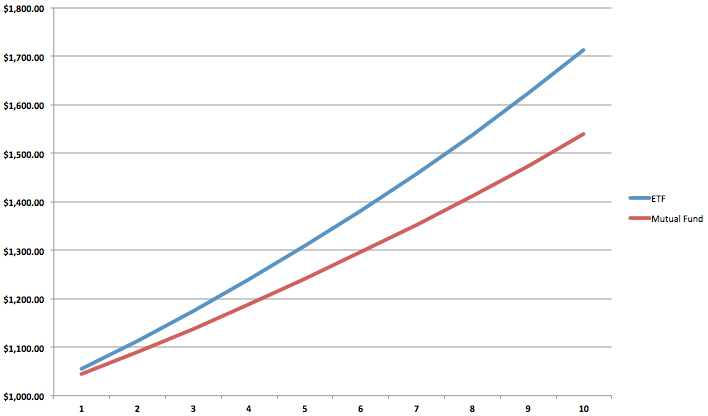Mutual Fund Expense Ratio The Effects on Performance
Post on: 18 Май, 2015 No Comment

by KenFaulkenberry
Mutual Fund Expense Ratio
Every investor should have a basic understanding of the mutual fund expense ratio ; including how much it can hurt investment performance.
What is a Mutual Fund?
Mutual funds are an investment vehicle created by portfolio management companies to combine or pool the money of many investors. The owners of the shares then share proportionately in the income, capital gains, and expenses of the fund.
What is the Mutual Fund Expense Ratio?
The mutual fund expense ratio is the percentage of fund assets that go toward managing, administering and, in many cases, advertising the fund. These expenses are deducted from the fund regardless of whether the portfolio has profits or losses. There are 3 main types of mutual fund expenses that make up the ratio.
Management Fees
The management fee, or investment advisory fee, is used to compensate the managers of the portfolio. On average this fee is about 0.50% 1.0% annually of the funds assets
Administrative Costs
The administrative costs are the expenses of running the fund. This would include record keeping, customer service, mailing, communications, etc. These costs can vary greatly, expressed as a percentage of fund assets.
12-1b Distribution Fees
The last and most controversial fee is called the 12-1b distribution fee that is collected by many mutual funds. This fee is collected for advertising and promoting the fund. Yes, many mutual funds charge their shareholders to market and promote the fund.
These three fees make up the percentage of assets deducted from a fund, and are referred to as the mutual fund expense ratio. The average mutual fund expense ratio is about 1.4% of assets annually.
How Does the Expense Ratio Hurt Performance?
The long term average real (after inflation) rate of return of the stock market is 6.5%. But if you invest in mutual funds with an expense ratio of 1.4% you will only net a 5.1% real rate of return. Remember, these expenses are deducted from earnings of the fund, therefore lowering your rate of return.
With self directed investing an investor can keep his expense ratio much lower by investing in individual stocks and ETFs, but avoiding mutual funds. An investor who lowers his expense ratio to 0.4% can save hundreds of thousands of dollars over a lifetime. Let’s look at what this does to a $100,000 investment portfolio over a 30 year period.
Assume:
-$100,000 lump sum investment for 30 years.
-6.5% real rate of return less 0.4% expense ratio for self directed investor.
-6.5% real rate of return less 1.4% expense ratio for mutual fund investor.
=Real Rate of Return of 6.1% for self directed portfolio grows to $590,829
=Real Rate of Return of 5.1% for mutual fund portfolio grows to $444,715
The Difference is over $146,000.
The higher expense ratio costs the mutual fund investor $146,000 in value for every $100,000 investment over a 30 year period. In this example the only variation is a 1.0% difference in the expense ratio. Pretty amazing, right.
Investors should consider these facts before buying investment vehicles. Thirty years ago mutual funds were a good option for investors, but times have changed. Commissions on buying stocks and bonds have fallen over 90%. In addition, the advantages of investing in exchange traded funds (ETFs) include many of the advantages of mutual funds, but usually at a lower cost.
A high mutual fund expense ratio will hurt investment performance and should cause investors to consider self directed investing. Investing in a combination of individual stocks and ETFs can lower expenses and save hundreds of thousands of dollars over a lifetime.














